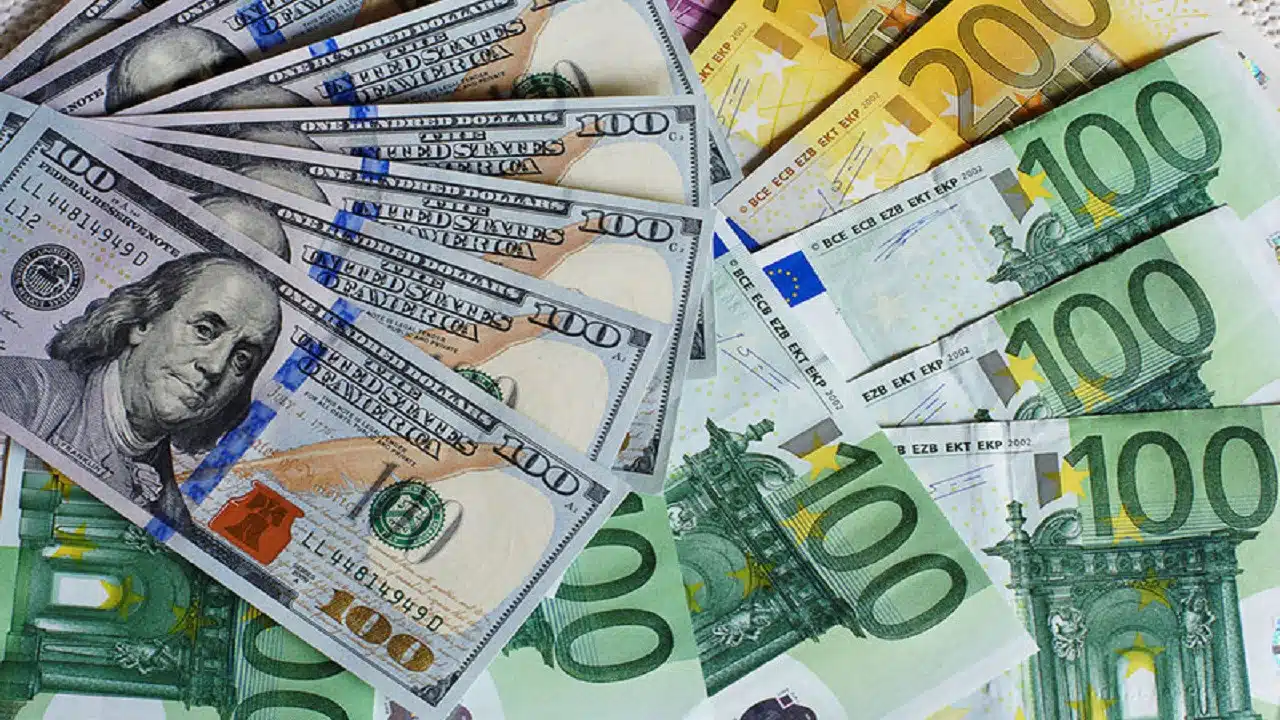- EUR/USD remains above 1.0800 following robust preliminary PMI data from both the Eurozone and the US.
- It is expected that the ECB will lower interest rates three times before the end of the year.
- There are lingering doubts about the future of the US Dollar due to the strong possibility of a rate cut by the Federal Reserve in September.
EUR/USD gives up most of its intraday gains during Thursday’s American session. The primary currency pair experienced a decline from its intraday high of 1.0860 following the release of a robust preliminary United States (US) Purchasing Managers Index (PMI) report for May by S&P Global.
The agency reported that the Manufacturing PMI increased to 50.9, surpassing both expectations and the previous reading of 50.0. The Services PMI, which reflects the performance of the services sector, has experienced a significant increase, reaching 54.8. This surpasses both the initial estimates and the previous reading of 51.3.
Impressive US PMI readings point to a promising US economic outlook, signaling a healthy demand for labor and resilient consumer spending. The agency stated that the US economy has regained momentum after a period of slower growth, as indicated by the latest PMI data, which shows the highest expansion in over two years in May. The data suggests that the US economy is on track for another substantial GDP gain in the second quarter.
The US Dollar Index (DXY), which monitors the value of the US Dollar against six major currencies, has successfully rebounded from its earlier losses and surged to nearly 104.90. Nevertheless, there is still some uncertainty regarding the near-term outlook, although investors maintain confidence in the Federal Reserve’s potential decision to decrease interest rates starting from the September meeting.
No one reduced their bets in September that the Fed would decrease interest rates, notwithstanding the aggressive comments made by Fed members on the upcoming interest rate forecast and the minutes of the Federal Open Market Committee (FOMC) meeting in May, which were published on Wednesday, disclosed this information.
The FOMC minutes were anticipated to only have a temporary effect on the US Dollar. Officials expressed concern about the slowdown in the disinflation process, citing three instances of high inflation during the January-March period. Investors are strongly speculating on rate cuts in September based on their anticipation of a decline in inflation, as indicated by the April Consumer Price Index (CPI) report.
The US Department of Labor said that fewer people than expected filed their first claims for unemployment benefits in the week ending May 17. While 223K was the prior estimate and 220K was the predicted consensus, the actual number of initial requests for unemployment benefits came in at 215K. A previous value of 222K was revised higher.
EUR/USD Slides Between Strong Preliminary PMIs for the Eurozone and the US
- EUR/USD relinquishes most of the gains it had made following the release of robust Eurozone HCOB preliminary PMI figures for May. According to the agency’s report, there was an increase in the Manufacturing PMI to 47.4, which was higher than the estimated 46.2 and the previous reading of 45.7. On the other hand, if the figure falls below the 50.0 threshold, it is seen as a contraction. The Composite PMI has surged to 52.3, surpassing both the consensus forecast of 52.0 and the previous release of 51.7. The Services PMI, which reflects the performance of the service sector, experienced steady growth with a reading of 53.3. However, it fell slightly short of the expected figure of 53.5.
- According to Dr. Cyrus de la Rubia, Chief Economist at Hamburg Commercial Bank (HCB), the latest flash PMI data indicates that we are making progress in the right direction. Based on the PMI numbers in our GDP forecast, it appears that the Eurozone is expected to experience a growth rate of 0.3% in the second quarter, alleviating concerns of a potential recession. The service sector has been experiencing steady growth, which has now extended for four consecutive months. The manufacturing sector is becoming less of a hindrance to the economy, and there is growing optimism about future output in this industry. Given the current circumstances, it is quite possible that the GDP growth could approach 1% this year, with a potential for even higher growth.
- In the upcoming period, the Euro’s trajectory will be influenced by market sentiments regarding the potential decrease in interest rates during the July meeting of the European Central Bank (ECB). There is widespread anticipation that the ECB will begin to lower its key borrowing rate starting from the June meeting. As a result, investors are still unsure about future interest rate reductions by the ECB.
- Several ECB policymakers are inclined to maintain a data-dependent approach for any potential rate-cut decision in July. This cautious stance is driven by the concern that an overly aggressive monetary policy easing could reignite price pressures. In addition, policymakers at the ECB express concerns about the potential impact of subsequent rate cuts on the delicate balance between monetary stimulus, inflation, and other financial factors.
- Financial markets expect the ECB to reduce interest rates three times over the course of the year. UBS, a prominent financial services provider, stated that based on their analysis, the ECB might implement a series of gradual interest rate cuts following the initial reduction in June. There will be gradual reductions of 25 basis points every quarter, resulting in a cumulative decrease of 75 basis points by 2024 and an additional 100 basis points by 2025.


